kottke.org posts about fashion
Artist Phillip Stearns makes blankets and tapestries out of glitch art. Some of the source images are taken from intentionally short-circuited digital cameras.

All items are woven in the US and cost $200 and up (plus shipping).
The Flint and Tinder folks are back with another Kickstarter campaign and this time they are selling a hooded sweatshirt with a ten-year warranty. It’s a premuim-quality sweatshirt, made entirely in the USA, and if rips or comes apart at the seams in the next ten years, just send it to them and they will mend it and send it back.
The Flint and Tinder team overheard a conversation in a factory we were visiting. Someone was talking about using coarse thread with delicate fabric. Doing this accelerates the process of wearing holes into a garment as it goes through the dryer time and time again.
It’s a common trick of the trade. It’s one of several techniques companies secretly use to ensure that if you like what you’ve bought, you’ll be forced to replace it soon.
In the manufacturing industry, this is known as “planned obsolescence.”
It doesn’t have to be this way though — far from it. Eager to prove a point, send a message, and make a sweatshirt that could last a lifetime (the way your favorite sweatshirt should), we set out to make a premium piece that’s so well constructed customers would rather have it mended (free of charge, of course) than replaced.
Backed.
What are all those models in the J.Crew catalog doing anyway? By cleverly piecing together narratives from catalog photographs, Meghan O’Neill imagines that they are solving crimes, misbehaving on honeymoons, and such. Here’s the most recent episode:
(via @sippey)
From Stack Overflow, a question about how to efficient sort a pile of socks.
Yesterday I was pairing the socks from the clean laundry, and figured out the way I was doing it is not very efficient. I was doing a naive search — picking one sock and “iterating” the pile in order to find its pair. This requires iterating over n/2 * n/4 = n^2/8 socks on average.
As a computer scientist I was thinking what I could do? sorting (according to size/color/…) of course came into mind to achieve O(NlogN) solution.
And everyone gets it wrong. The correct answer is actually:
1) Throw all your socks out.
2) Go to Uniqlo and buy 15 identical pairs of black socks.
3) When you want to wear socks, pick any two out of the drawer.
4) When you notice your socks are wearing out, goto step 1.
QED
Oh Vogue, who thought a Hurricane Sandy-themed photo shoot with supermodels walking through Far Rockaway dressed in the likes of Rodarte and Marc Jacobs was a good idea?
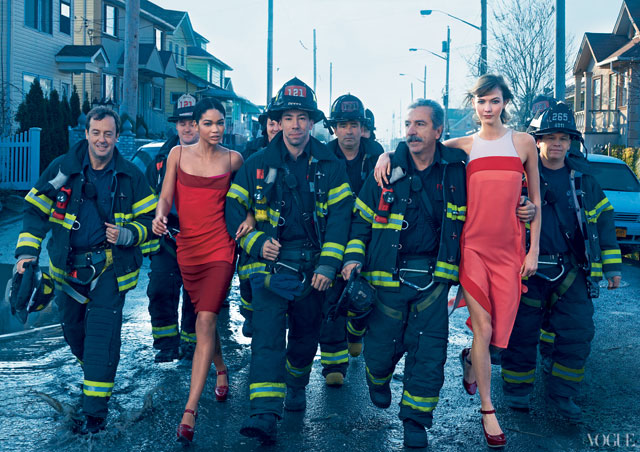
“…we spent the night on a bridge, then went back in with the National Guard to work on patients.” On Iman: Narciso Rodriguez camisole and pencil skirt. On Kloss: Diane von Furstenberg dress. Hair: Julien d’Ys for Julien d’Ys. Makeup: Stéphane Marais.
I guess they were going for inappropriate & provocative but hit inappropriate & idiotic instead? Vogue did raise a bunch of money for storm relief, but still. They should leave the provocative stuff to Vogue Italia and Steven Meisel…they’re a lot better at it. (via @alexandrak)
Earlier this morning in a post about Apple manufacturing their products in the US, I wrote “look for this “made in the USA” thing to turn into a trend”. Well, Made in the USA is already emerging as a trend in the media. On Tuesday, Farhad Manjoo wrote about American Giant, a company who makes the world’s best hoodie entirely in the US for a decent price.
For one thing, Winthrop had figured out a way to do what most people in the apparel industry consider impossible: He’s making clothes entirely in the United States, and he’s doing so at costs that aren’t prohibitive. American Apparel does something similar, of course, but not especially profitably, and its clothes are very low quality. Winthrop, on the other hand, has found a way to make apparel that harks back to the industry’s heyday, when clothes used to be made to last. “I grew up with a sweatshirt that my father had given me from the U.S. Navy back in the ’50s, and it’s still in my closet,” he told me. “It was this fantastic, classic American-made garment — it looks better today than it did 35, 40 years ago, because like an old pair of denim, it has taken on a very personal quality over the years.”
The Atlantic has a pair of articles in their December issue, Charles Fishman’s The Insourcing Boom:
Yet this year, something curious and hopeful has begun to happen, something that cannot be explained merely by the ebbing of the Great Recession, and with it the cyclical return of recently laid-off workers. On February 10, [General Electric’s Appliance Park in Louisville, KY] opened an all-new assembly line in Building 2 — largely dormant for 14 years — to make cutting-edge, low-energy water heaters. It was the first new assembly line at Appliance Park in 55 years — and the water heaters it began making had previously been made for GE in a Chinese contract factory.
On March 20, just 39 days later, Appliance Park opened a second new assembly line, this one in Building 5, to make new high-tech French-door refrigerators. The top-end model can sense the size of the container you place beneath its purified-water spigot, and shuts the spigot off automatically when the container is full. These refrigerators are the latest versions of a style that for years has been made in Mexico.
Another assembly line is under construction in Building 3, to make a new stainless-steel dishwasher starting in early 2013. Building 1 is getting an assembly line to make the trendy front-loading washers and matching dryers Americans are enamored of; GE has never before made those in the United States. And Appliance Park already has new plastics-manufacturing facilities to make parts for these appliances, including simple items like the plastic-coated wire racks that go in the dishwashers.
and James Fallows’ Mr. China Comes to America:
What I saw at these Chinese sites was surprisingly different from what I’d seen on previous factory tours, reflecting the political, economic, technological, and especially social pressures that are roiling China now. In conjunction with significant changes in the American business and technological landscape that I recently saw in San Francisco, these changes portend better possibilities for American manufacturers and American job growth than at any other time since Rust Belt desolation and the hollowing-out of the American working class came to seem the grim inevitabilities of the globalized industrial age.
For the first time in memory, I’ve heard “product people” sound optimistic about hardware projects they want to launch and facilities they want to build not just in Asia but also in the United States. When I visited factories in the upper Midwest for magazine stories in the early 1980s, “manufacturing in America” was already becoming synonymous with “Rust Belt” and “sunset industry.” Ambitious, well-educated people who had a choice were already headed for cleaner, faster-growing possibilities — in consulting, finance, software, biotech, anything but things. At the start of the ’80s, about one American worker in five had a job in the manufacturing sector. Now it’s about one in 10.
Add to that all of the activity on Etsy and the many manufactured-goods projects on Kickstarter that are going “Made in the USA” (like Flint & Tinder underwear (buy now!)) and yeah, this is definitely a thing.
As noted by Fishman in his piece, one of the reasons US manufacturing is competitive again is the low price of natural gas. From a piece in SupplyChainDigest in October:
Several industries, noticeable chemicals and fertilizers, use lots of natural gas. Fracking and other unconventional techniques have already unlocked huge supplies of natural gas, which is why natural gas prices in the US are at historic lows and much lower than the rest of the world.
Right now, nat gas prices are under $3.00 per thousand cubic, down dramatically from about three times that in 2008 and even higher in 2006. Meanwhile, natural gas prices are about $10.00 right now in Europe and $15.00 in parts of Asia.
Much of the growing natural gas reserves come from the Marcellus shale formation that runs through Western New York and Pennsylvania, Southeast Ohio, and most of West Virginia. North Dakota in the upper Midwest also is developing into a major supplier of both oil and natural gas.
So basically, energy in the US is cheap right now and will likely remain cheap for years to come because hydraulic fracturing (aka fracking aka that thing that people say makes their water taste bad, among other issues) has unlocked vast and previously unavailable reserves of oil and natural gas that will take years to fully exploit. A recent report by the International Energy Agency suggests that the US is on track to become the world’s biggest oil producer by 2020 (passing both Saudi Arabia and Russia) and could be “all but self-sufficient” in energy by 2030.
By about 2020, the United States will overtake Saudi Arabia as the world’s largest oil producer and put North America as a whole on track to become a net exporter of oil as soon as 2030, according to a report from the International Energy Agency.
The change would dramatically alter the face of global oil markets, placing the U.S., which currently imports about 45 percent of the oil it uses and about 20 percent of its total energy needs, in a position of unexpected power. The nation likely will become “all but self-sufficient” in energy by 2030, representing “a dramatic reversal of the trend seen in most other energy-importing countries,” the IEA survey says.
So yay for “Made in the USA” but all this cheap energy could wreak havoc on the environment, hinder development of greener alternatives to fossil fuels (the only way green will win is to compete on price), and “artificially” prop up a US economy that otherwise might be stagnating. (thx, @rfburton, @JordanRVance, @technorav)
Matt Haughey wrote an essay called Why I love Twitter and barely tolerate Facebook.
There’s no memory at Twitter: everything is fleeting. Though that concept may seem daunting to some (archivists, I feel your pain), it also means the content in my feed is an endless stream of new information, either comments on what is happening right now or thoughts about the future. One of the reasons I loved the Internet when I first discovered it in the mid-1990s was that it was a clean slate, a place that welcomed all regardless of your past as you wrote your new life story; where you’d only be judged on your words and your art and your photos going forward.
Facebook is mired in the past.
One of my favorite posts on street photographer Scott Schuman’s blog, The Sartorialist, consists of two photos of the same woman taken several months apart.

Schuman asked the woman how she was able to create such a dramatic change:
Actually the line that I think was the most telling but that she said like a throw-away qualifier was “I didn’t know anyone in New York when I moved here…”
I think that is such a huge factor. To move to a city where you are not afraid to try something new because all the people that labeled who THEY think you are (parents, childhood friends) are not their to say “that’s not you” or “you’ve changed”. Well, maybe that person didn’t change but finally became who they really are. I totally relate to this as a fellow Midwesterner even though my changes were not as quick or as dramatic.
I bet if you ask most people what keeps them from being who they really want to be (at least stylistically or maybe even more), the answer would not be money but the fear of peer pressure — fear of embarrassing themselves in front of a group of people that they might not actually even like anyway.
For a certain type of person, changing oneself might be one of the best ways of feeling free and in control of one’s own destiny. And in the social media world, Twitter feels like continually moving to NYC without knowing anyone whereas Facebook feels like you’re living in your hometown and hanging with everyone you went to high school with. Twitter’s we’re-all-here-in-the-moment thing that Matt talks about is what makes it possible for people to continually reinvent themselves on Twitter. You don’t have any of that Facebook baggage, the peer pressure from a lifetime of friends, holding you back. You are who your last dozen tweets say you are. And what a feeling of freedom that is.
The shocking thing about this 72 year old grandfather modeling teen-girl clothes: he rocks it.
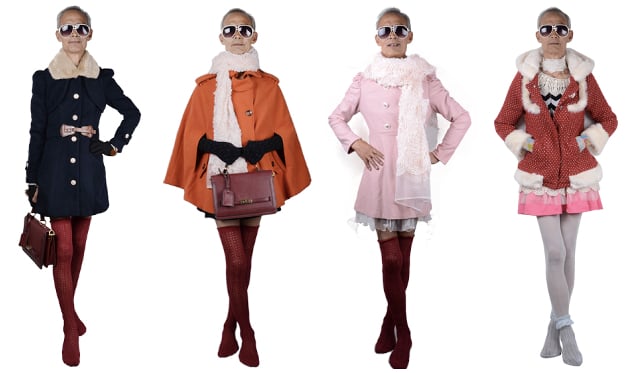
Liu Xianping, has been posing for his granddaughter’s female fashion store on Tmall and has become an Internet sensation. Though most of the clothes Liu has been modeling for are more of the tiny, sweet and cute teen girl style with rosy shades, laces and ribbons, the 72-year-old totally pulled things off. His signature piece so far seems to be color tights and thigh stockings. Liu’s confidence in front of the camera and his long pair of skinny legs are the envy of many girls. Netizen Satsuki sighed: “He has such a good figure, especially those legs!”
I simultaneously love that he’s doing this with his granddaughter and hate that women, myself included, are coveting the spindly legs of a 72 year old man. (via @mulegirl)
Gentlemen of Bacongo is a book of photography by Daniele Tamagni documenting a group of men from the Congo who dress in designer suits. Meet Le Sapeurs.
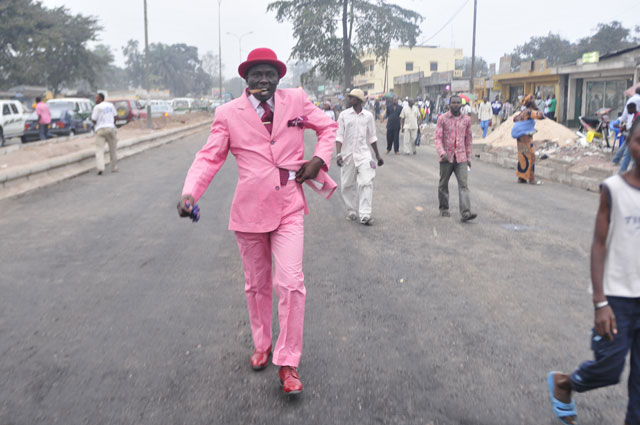
Photographer Daniele Tamagni’s new book Gentlemen of Bacongo captures the fascinating subculture of the Congo in which men (and a few women) dress in designer and handmade suits and other luxury items. The movement, called Le Sape, combines French styles from their colonial roots and the individual’s (often flamboyant) style. Le Sapeurs, as they’re called, wear pink suits and D&G belts while living in the slums of this coastal African region.
In interviews with some notable sapeurs, Tamagni unearths the complex and varied rules and standards of Le Sape, short for Société des Ambianceurs et des Personnes Élégantes, or the Society of Tastemakers and Elegant People. Sapeur Michel comments on the strange combination of poverty and fashion, “A Congolese sapeur is a happy man even if he does not eat, because wearing proper clothes feeds the soul and gives pleasure to the body.”
Solange Knowles recently shot Losing You in South Africa and it features many gentlemen of Le Sape. Tamagni went along as an advisor and photographed Solange along the way. (via @youngna)
Ebbets Field Flannels sells historic baseball jerseys made from “real 1950s-era wool blend baseball cloth”.
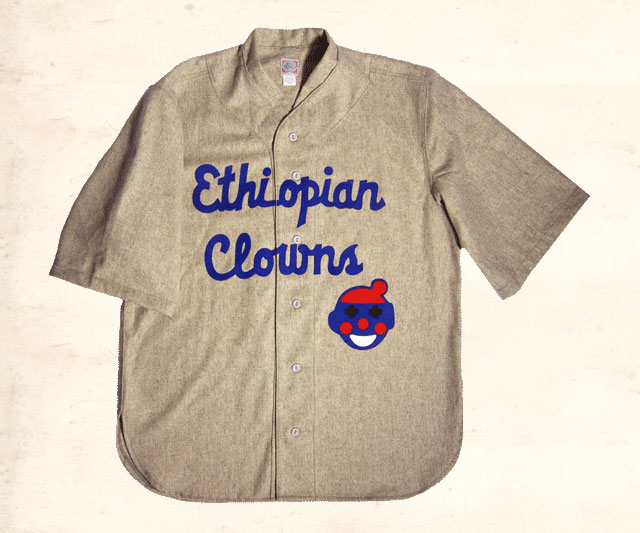
The Clowns were baseball’s answer to the Harlem Globetrotters. Players entertained the crowd with various comedic antics, including “shadowball”, where they would go through a warm-up routine with no baseball. When the team joined the Negro American League, they dropped the “Ethiopian” moniker and played straight baseball.
(via @tcarmody)
No. No no no. No no no no no no no no no no no no no no no no no no no no no no no no no no no no no no no no no no no no no no no no no no no no no no. NO NO NO NO! No. No no. No no no no no no. No. No no no no no no no no no no no no no no no no no no.
Some will spend $795 on Gucci backpacks or $1,090 on leopard print puffy coats from Lanvin.
Sasha Charnin Morrison, fashion director at Us Weekly, admits that some of the clothes are outrageously prices. But, she says, things like $200 Gucci sneakers make her kids happy.
“They’re a walking billboard of you. They’re a reflection of who you are, so if you are someone highly stylized, then you want to make sure your kids are the best-dressed kids out there,” she says.
No no no no no no no no no. No. No no no no no no no no no. Fuck you.
Matchbook is a blog of bathing suits that happen to visually match up with book covers. Like so:

(via @nickbilton)
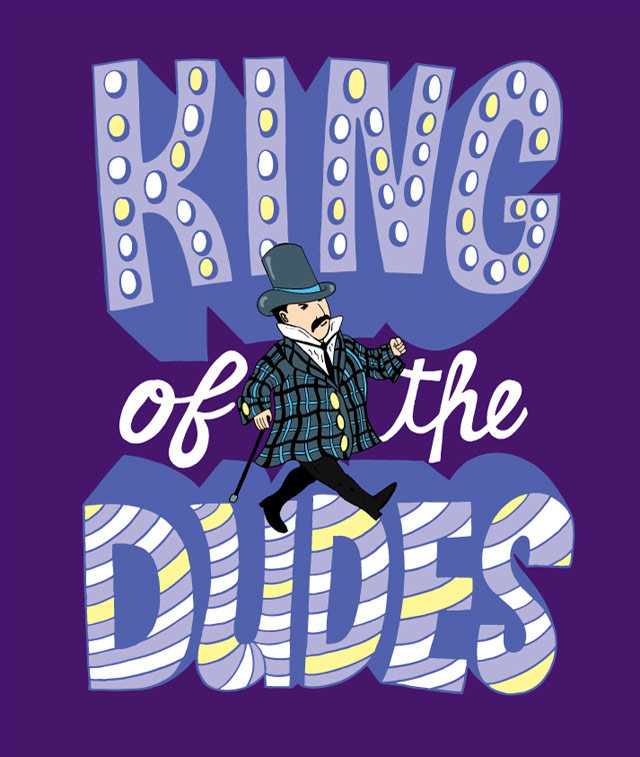
E. Berry Wall was a dude. But not just any dude. In 1888, he was declared “King of the Dudes” in a competition against another gentleman, one Robert Hilliard.
Wall became famous after meeting Blakely Hall, a reporter hungry for good copy. Thereafter, every week or so, Hall’s articles publicizing Wall’s adventures in clothing appeared in newspapers across the country. Then one of Hall’s competitors set up a rival, actor Robert “Bob” Hilliard, another flashy dresser. Thus began the Battle of the Dudes, in which each sought to eclipse the other in sartorial extremes. According to the Times, Wall finally won when, during the Great Blizzard of 1888, he strode into the Hoffman House bar clad in gleaming boots of black patent leather that went to his hips. (Nonetheless, some social historians claim Hilliard won with the high boots, supposedly part of his Western gambler’s costume from a play in which he was then appearing).
But it was Wall who won a later sartorial marathon:
Wall won another contest in Saratoga when daredevil financier John “Bet-A-Million” Gates wagered that he could not wear 40 changes of clothes between breakfast and dinner. On the appointed day, Wall repeatedly appeared at the racetrack in one flashy ensemble after another until, exhausted but victorious, he at last entered the ballroom of the United States Hotel in faultless evening attire to wild applause.
I wonder how Wall would have done against the likes of Kanye and his entourage? (via @mrgan)
Note: Illustration by Chris Piascik…prints & more are available.
For the most recent issue of Fast Company, Jeff Chu profiled Tadashi Yanai, the CEO of Uniqlo, one of the hottest retail companies in the world. The piece is full of interesting business & design wisdom throughout.
Yanai, though, cannot resist the American market. Around the corner from his Tokyo office, there’s a large map of Manhattan. There are push pins marking Abercrombie & Fitch, American Eagle, Forever 21, Gap, Hollister, and a half-dozen other brands that could be considered immediate competitors. Significantly, there’s one outlier marked: the Apple Store. When I ask Yanai about this, he replies simply, “People have only one wallet.”
More notably, Apple is perhaps the best example of a company whose products have become ubiquitous without losing cachet. “Specialness is nice to have,” Yanai says, “but what’s more important is being made for all.”
One of my favorite things about shopping at Uniqlo is how they hand you your credit card back:
All associates are trained, for instance, to return your credit card and receipt with both hands, as a sign of respect.
Fun fact about Mister Rogers’ cardigan sweaters that I hadn’t heard before: his mom knitted all of them by hand for him. That may be the most perfectly perfect detail about anything that I’ve ever heard. (via ★djacobs)
Last week, graffiti “artist” Kidult painted the word ART in pink paint all over the Marc Jacobs store in Soho. The store’s staff cleaned it up, but not before snapping a photo of it and dubbing it Art by Art Jacobs. And then, in an awesome twist, Marc Jacobs put the photo on a tshirt and offered it for sale: $689 or $9 less if you want it signed by the “artist”. The Observer’s Foster Kamer has the story.
Jacobs, in this situation, has made one hell of a commentary about the absurd commoditization that some street art has yielded, and how easily ostensibly subversive art can actually be subverted, facile as it so often is, and it may be the best take on the matter since Exit Through The Gift Shop.
I’m going to pay for those quotation marks with lots of email and tweets, aren’t I?
Update: Kidult has answered back with a tshirt of his own that pictures the “artist” tagging the store. $10.

This is one of a pair of cow shoes worn by moonshiners during Prohibition to hide their tracks from prohibition agents. From a 1922 edition of The Evening Independent:
A new method of evading prohibition agents was revealed here today by A.L. Allen, state prohibition enforcement director, who displayed what he called a “cow shoe” as the latest thing front the haunts of moonshiners.
The cow shoe is a strip of metal to which is tacked a wooden block carved to resemble the hoof of a cow, which may be strapped to the human foot. A man shod with a pair of them would leave a trail resembling that of a cow.
The shoe found was picked up near Port Tampa where a still was located some time ago. It will be sent to the prohibition department at Washington. Officers believe the inventor got his idea from a Sherlock Holmes story in which the villain shod his horse with shoes the imprint of which resembled those of a cow’s hoof.
I think I saw a woman wearing a pair of these on 6th Ave last week. (via nyer photo booth)
A collection of vintage mugshots from the 1920s. Crime used to be a lot more civilized.
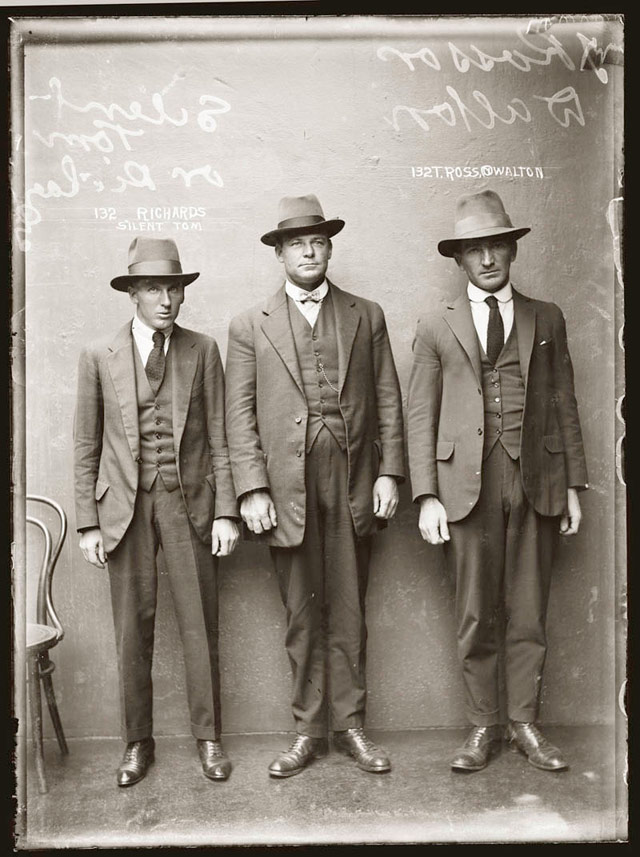
(thx, david)
Flint and Tinder is attempting to reintroduce American-made underwear back into US stores with a Kickstarter project. They’ve raised $39,000+ so far.
The factory I’m working with is family owned and operated. It’s over 100 years old. Just before the recession hit, they moved into a larger facility and invested in some of the capital improvements shown in the video (solar power etc.).
At that time they had 300+ employees and were hoping to double or triple in size. When we started this project however, with the economy in free-fall, they were down to just 90.
They’ve agreed to learn to make this new, high-end brand of American-made underwear. Here’s the fun part though: For ever 1000 pair we sell per month, 1 full-time job has to be added back to the assembly line. Hopefully, with your support, it will help them keep the doors open.
The Intimacy 2.0 fashion garments become see-through when the wearer’s heart rate increases.
I think my pants are broken. They should be fully transparent at the moment… (via ★warrenellis)
The first episode of the second season of Put This On is out (as funded on Kickstarter). The episode takes place in NYC and features a segment on Lo Heads, a subculture of Polo Ralph Lauren enthusiasts.
With roots in 1980s street gangs, these Polo Ralph Lauren enthusiasts have made “aspirational apparel” a lifestyle. They once had to boost their Polo from stores and fight to keep it on the streets. Today, their culture is worldwide, promulgated by hip-hop. Their hero is Ralph Lauren — a working class New Yorker who understood that the fantastical power of style can be transformative. Dallas Penn from The Internets Celebrities, a dedicated Lo Head (and former member of the Decepts crew) with a collection of over 1000 pieces of Polo apparel takes us on a tour of this remarkable fashion subculture.
Over at Sew Weekly, Mena Trott predicts what some of the characters will be wearing in the coming season of Mad Men.
Oh, Betty. For years, she has been immaculately dressed and presented as the facade of the perfect 1950s/1960s wife. With her cinched waists and billowing skirts, she’s held onto late 1950s and early 1960s fashion the longest. In season four, she’s married to the anti-Don, the boring Henry Francis and is getting a little too familiar with the bottle. When you’re married to Henry Francis, you just don’t care any more. That should be embroidered on a pillow.
Available at Etsy, prints of Star Wars characters wearing designer clothes by John Woo (not the director). A stormtrooper wearing Thom Browne, Boba Fett wearing Supreme Visvim, and my favorite, Jango Fett wearing Comme des Garçons.
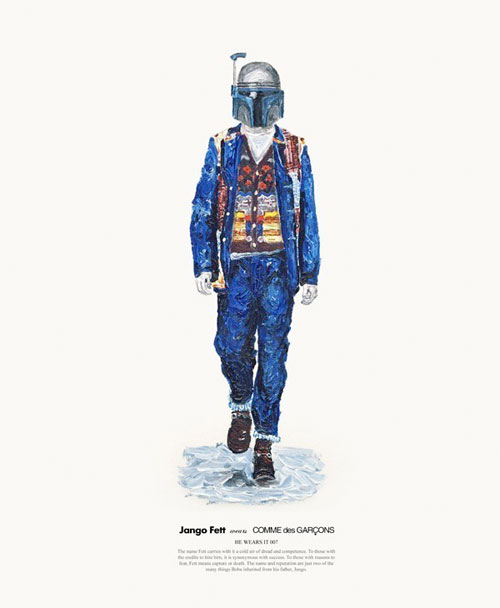
Woo does similar illustrations outside the Star Wars universe…here’s the T-1000 from Terminator 2 wearing Thom Browne. (via flavorwire)
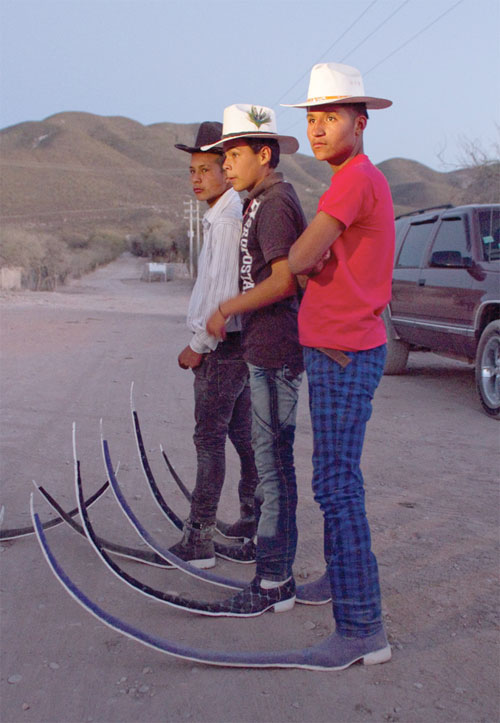
Last year, Vice travelled to Matehuala, Mexico in search of dance crews who wear extremely pointy cowboy boots called botas vaqueras exóticas.
In Matehuala, guarachero has become an unlikely style of music where a bunch of people who in theory should not get along come together and get along. It’s also the music preferred by the men and boys in the long and pointed boots.
Participants in these dance contests spend the days and weeks prior choreographing intricate footwork routines and fabricating their own outfits with cheap paint and fabric. The grand prize, beyond the enthusiastic crowd’s affection, is either a bottle of whiskey or a few bucks.
(via mlkshk)
In a piece for Vanity Fair, Kurt Andersen argues that for the first time in recent history, American pop culture (fashion, art, music, design, entertainment) hasn’t changed dramatically in the past 20 years.
Since 1992, as the technological miracles and wonders have propagated and the political economy has transformed, the world has become radically and profoundly new. (And then there’s the miraculous drop in violent crime in the United States, by half.) Here is what’s odd: during these same 20 years, the appearance of the world (computers, TVs, telephones, and music players aside) has changed hardly at all, less than it did during any 20-year period for at least a century. The past is a foreign country, but the recent past — the 00s, the 90s, even a lot of the 80s — looks almost identical to the present. This is the First Great Paradox of Contemporary Cultural History.
Think about it. Picture it. Rewind any other 20-year chunk of 20th-century time. There’s no chance you would mistake a photograph or movie of Americans or an American city from 1972-giant sideburns, collars, and bell-bottoms, leisure suits and cigarettes, AMC Javelins and Matadors and Gremlins alongside Dodge Demons, Swingers, Plymouth Dusters, and Scamps-with images from 1992. Time-travel back another 20 years, before rock ‘n’ roll and the Pill and Vietnam, when both sexes wore hats and cars were big and bulbous with late-moderne fenders and fins-again, unmistakably different, 1952 from 1972. You can keep doing it and see that the characteristic surfaces and sounds of each historical moment are absolutely distinct from those of 20 years earlier or later: the clothes, the hair, the cars, the advertising — all of it. It’s even true of the 19th century: practically no respectable American man wore a beard before the 1850s, for instance, but beards were almost obligatory in the 1870s, and then disappeared again by 1900. The modern sensibility has been defined by brief stylistic shelf lives, our minds trained to register the recent past as old-fashioned.
Men hate shopping so they buy their favorite shoes/coats/pants/shirts in bulk. Here are interviews with some of those men. Guess who this might be:
I hate to shop. For the last 20 years I only shopped once every two or three years. I would go to the big and tall store and buy only what I could find in 20 minutes, tops - usually a few dozen briefs, T-shirts and sweaters. If there was time left, I would try on a jacket. Nothing needed to be perfect: just fit and be black.
Now I am buying African block-print shirts and pants in a riot of colors and patterns from an African street merchant. I visit him every few weeks to see what’s new. I buy 10 or 15 at a time.
I like Mike but his wardrobe is pure WTF. Like these jeans:
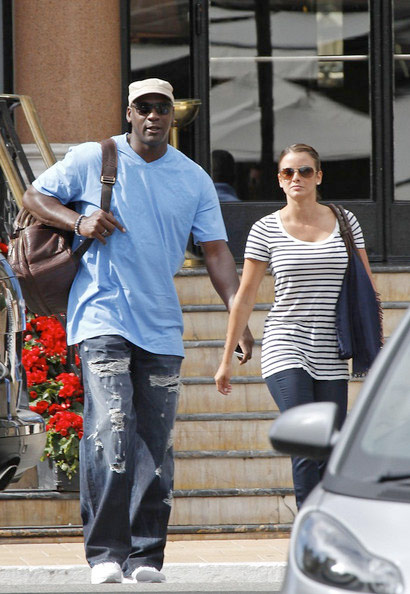
This is sort of the opposite of the NBA fashion nerds.

NBA players, especially the younger ones, are dressing like nerds.
In their tandem press conferences, LeBron James and Dwyane Wade, of the Miami Heat, alternate impeccably tailored suits with cardigans over shirts and ties. They wear gingham and plaid and velvet, bow ties and sweater vests, suspenders, and thick black glasses they don’t need. Their colors conflict. Their patterns clash. Clothes that once stood as an open invitation to bullies looking for something to hang on the back of a bathroom door are what James now wears to rap alongside Lil Wayne. Clothes that once signified whiteness, squareness, suburbanness, sissyness, in the minds of some NBA players no longer do.
If you happen to be someone who looks at Durant, James, or Amar’e Stoudemire’s Foot Locker commercials — in which he stalks along a perilously lit basketball court wearing a letterman’s cardigan, a skinny tie, and giant black glasses (his are prescription) — and wonders how the NBA got this way, how it turned into Happy Days, you’re really wondering the same thing about the rest of mainstream black culture. When did everything turn upside down? Who relaxed the rules? Is it really safe to look like Carlton Banks?
See also Kanye West and his entourage circa 2009. (thx, sveinn)
Nike has designed a soccer shoe for Real Madrid’s Cristiano Ronaldo that uses a striped pattern on one side of the shoe designed to confuse opponents as to which way Ronaldo might be moving his feet.
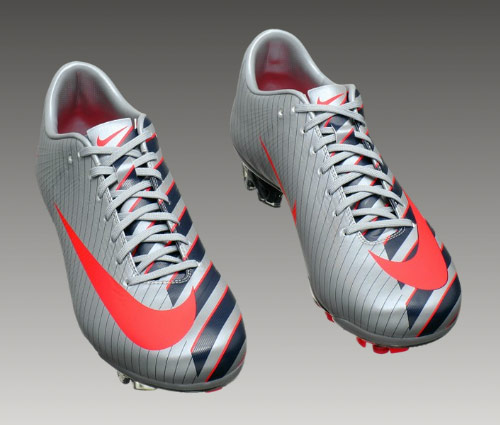
The cleats look remarkably different from each side of Ronaldo. From the right, they have a clean look with pinstripes. From the left, though, there are thick stripes with a red accent line. Furthermore, the asymmetrical design makes a defender’s judgment that much harder, as the visual effect of Ronaldo turning his foot in one direction may not come across exactly the same as reality.
Reminds me of the dazzle camouflage used on military ships in WWI and WWII.
Dress like your favorite nerdy folk: Nerd Girlfriend is a companion site to the excellent Nerd Boyfriend.
Newer posts
Older posts




















Stay Connected